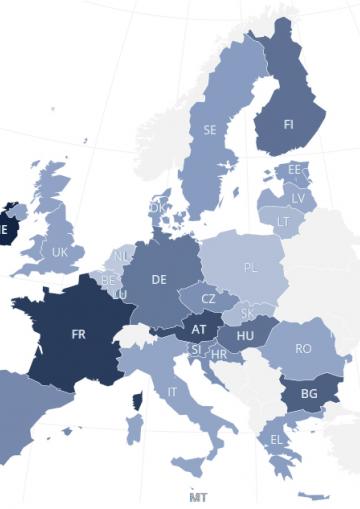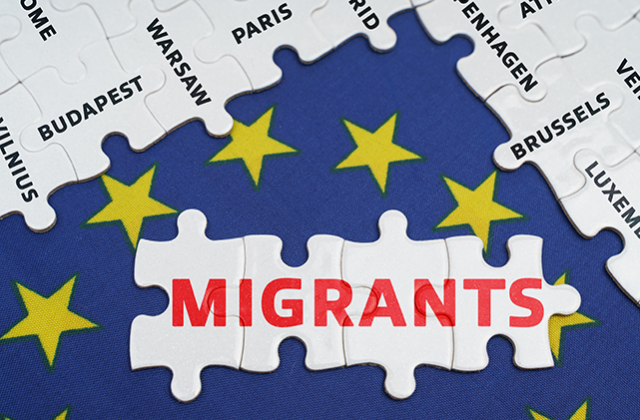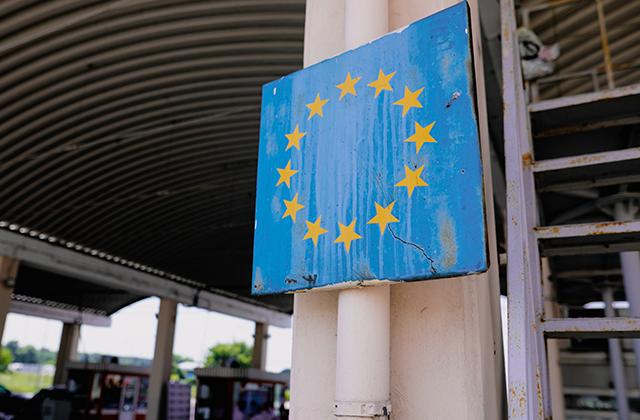Since 2014, FRA has been publishing an annual update of the forced return monitoring systems EU Member States have set up under Article 8 (6) of the EU’s Return Directive. This overview describes different indicators for an effective forced return monitoring system. It includes the organisation responsible for monitoring forced return, the number of operations monitored in 2020, the phases of monitored return operations, the number of staff trained and working as monitors, and whether the monitoring body issued public reports about their monitoring.
All EU Member States have some form of return monitoring by law. But in practice, gaps remain. For example, in Germany and in Sweden the main monitoring entity is closely connected to the authority responsible for returns. Without sufficient separation between the two, a monitoring system cannot be entirely effective.
In some EU Member States, only very few operations are monitored or the monitoring is limited to the pre-return phase and does not cover in-flight and arrival phases of return. These are equally essential.
Developments over the years also show that the implementation of national monitoring systems is not linear. Particularly where it is project-based or based on a temporary agreement between the authority and the monitoring entity, an adequate forced return monitoring system may be in place but gaps re-emerge when the funding ends. Such gaps occurred in 2020 in, for instance, Italy, Bulgaria and Lithuania, where the assigned civil society organisations’ financing expired.
In 2020, the Covid-19 pandemic considerably affected the number of returns in the EU. Consequently, return monitoring figures also decreased in 2020.
The table below compares developments in EU Member States. The overview does not cover the pool of forced return monitors under the European Border and Coast Guard Agency, Frontex.
| Country | Organisation responsible for the monitoring | Independent system to monitor forced returns in operation | ||||
|---|---|---|---|---|---|---|
| 2016 | 2017 | 2018 | 2019 | 2020 | ||
| AT | Human Rights Association Austria (Verein Menschenrechte Österreich) | ✔ | ✔ | ✔ | ✔ | ✔ |
| BE | General Inspectorate of the General Federal Police and the Local Police (AIG) (Inspection générale de la police fédérale et de la police locale, Algemene inspectie van de federale politie en van de lokale politie) | ✔ | ✔ | ✔ | ✔ | ✔ |
| BG | Ombudsman (О̀мбудсманът), Until 2019 the Center for the Study of Democracy monitored returns in Bulgaria | ✔ | ✔ | ✔ | ✔ | ✔ |
| CY | Office of the Commissioner for Administration and the Protection of Human Rights (Ombudsman) | ✘ | ✘ | ✘ | ✔ | ✔ |
| CZ | Ombudsman, Public Defender of Rights (PDR) (Veřejný ochránce práv, VOP) | ✔ | ✔ | ✔ | ✔ | ✔ |
| DE** | Federal Office for Migration and Refugees (Bundesamt für Migration und Flüchtlinge);
Fora at various airports:
|
(✘) | (✘) | (✘) | (✘) | (✘) |
| DK | Parliamentary Ombudsman (Folketingets Ombudsmand) | ✔ | ✔ | ✔ | ✔ | ✔ |
| EE | Estonian Red Cross (Eesti Punane Rist) | ✔ | ✔ | ✔ | ✔ | ✔ |
| EL | Greek Ombudsman (Συνήγορος του Πολίτη) | ✔ | ✔ | ✔ | ✔ | ✔ |
| ES | Ombudsman (Defensor del Pueblo) | ✔ | ✔ | ✔ | ✔ | ✔ |
| FI | Non-Discrimination Ombudsman (Yhdenvertaisuusvaltuutettu) | ✔ | ✔ | ✔ | ✔ | ✔ |
| FR | General Inspector of All Places of Deprivation of Liberty (Contrôleur général des lieux de privation de liberté) | ✘*** | ✔ | ✔ | ✔ | ✔ |
| HR | Croatian Law Centre (Hrvatski pravni centar) | ✘ | ✔ | ✔ | ✔ | ✔ |
| HU | Prosecution Service of Hungary (Magyarország Ügyészsége) | ✔ | ✔ | ✔ | ✔ | ✔ |
| IE* | No monitoring system in law | – | – | – | – | – |
| IT | National Guarantor for the Rights of Persons Deprived of Liberty (Garante nazionale dei diritti delle persone private della liberta' personale) | ✔ | ✔ | ✔ | ✔ | ✔ |
| LT | Lithuanian Red Cross Society (Lietuvos Raudonojo Kryžiaus draugija) until March 2020;
Diversity Development Group |
✘ | ✔ | ✔ | ✔ | ✔ |
| LU | Luxembourg Red Cross (Croix-Rouge luxembourgeoise) | ✔ | ✔ | ✔ | ✔ | ✔ |
| LV | Ombudsman’s Office (Tiesībsarga birojs) | ✔ | ✔ | ✔ | ✔ | |
| MT | Monitoring Board for Detained Persons | ✔ | ✔ | ✔ | ✔ | ✔ |
| NL | Inspectorate of Justice and Security (Inspectie Justitie en Veiligheid) | ✔ | ✔ | ✔ | ✔ | ✔ |
| PL | Various NGOs, e.g. Helsinki Foundation for Human Rights, Rule of Law Institute Foundation, MultiOcalenie Foundation | ✔ | ✔ | ✔ | ✔ | ✔ |
| PT | General Inspectorate of Internal Affairs (Inspecção-geral da Administração Interna, IGAI) | ✔ | ✔ | ✔ | ✔ | ✔ |
| RO | Romanian National Council for Refugees (Consiliul Național Român pentru Refugiați, CNRR) (NGO) | ✔ | ✔ | ✔ | ✔ | ✔ |
| SE** | Swedish Migration Agency (Migrationsverket) | ✘ | ✘ | ✔ | ✘ | ✘ |
| SI | Caritas Slovenia | ✔ | ✔ | ✔ | ✔ | ✔ |
| SK** | Slovak Humanitarian Council (NGO) | ✘ | ✘ | ✘ | ✔ | ✔ |
Notes:
'Independent system to monitor forced returns in operation' means that a monitoring entity different from the authority responsible for returns has been appointed and has carried out some monitoring activities during the year.
* Ireland is not bound by the Return Directive (2008/115/EC).
** In Germany, Slovakia and Sweden, in 2016, 2017 and 2018 the monitoring body appointed by law was an agency/entity belonging to the branch of government responsible for returns. Thus, FRA considers that it is not sufficiently independent to qualify as ‘effective’ under Article 8 (6) of the Return Directive. In Germany, the effective forced return monitoring system, operated by NGOs at certain airports, covers only parts of the country.
*** In France, the “Contrôleur général des lieux de privation de liberté” did not monitor any forced return operations during 2016.
| ✔ | Operational |
| (✘) | Partially operational |
| ✘ | Not operational |
| – | Information not applicable |
Source: FRA, 2021
Find additional data on forced return monitoring systems in our interactive data explorer.
The information on this page is up to date as of 13 December 2021.






